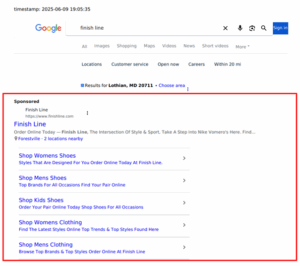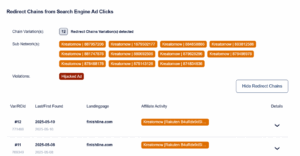Affiliate Sub-Networks: Between Reach Strategy and Loss of Trust

Introduction
Affiliate marketing thrives on partnerships – advertisers work with publishers who promote products or services and receive commissions upon success. As the industry grows more professionalised, affiliate sub-networks have emerged: networks within networks (yes, think Inception, but with tracking links and commission splits), complete with their own publisher structures and traffic sources. While they promise broader reach, sub-networks often introduce unexpected risks for advertisers, networks, and legitimate affiliates in practice.
This article explores what affiliate sub-networks are, the advantages they claim, the real dangers they present, and how advertisers can protect themselves.
What Are Affiliate Sub-Networks?
Affiliate sub-networks act as an intermediary between the main affiliate network and the end publishers. Instead of operating their own websites or ad spaces, a sub-network registers as an affiliate, then recruits its own sub-affiliates (sub-publishers). These sub-publishers deliver traffic, which the sub-network forwards to the main network using a centralised tracking ID.
Typical Characteristics:
- Operate as “master affiliates” with many sub-affiliates.
- Often maintain independent tracking and reporting platforms.
- Frequently lack transparency on traffic sources.
- Commonly used in large international networks (e.g., for CPI, CPA, or CPL campaigns).
Benefits of Sub-Networks – From Network and Advertiser Perspective
Sub-networks can offer tangible advantages – especially for programs looking to scale quickly:
- Scalability: Mobilise numerous publishers with minimal effort.
- Access to New Markets: Useful in launching or expanding internationally.
- Reduce Administrative Load: The sub-network typically handles relationship management.
However, the same structure that provides these benefits also introduces overlooked vulnerabilities.
Case Study: Sub-Publisher Ad-Hijacking by Kreatornow (Finishline.com, USA)
Over a 30-day period, the influencer sub-network Kreatornow was found engaging in ad-hijacking against finishline.com in the US.

Ad-Hijacking is a serious form of PPC fraud where affiliates mimic the advertiser’s own Google Ads – often using identical ad-copy and display URL – to divert traffic and claim fraudulent commissions. These fake ads outbid and replace the advertiser’s own in Google’s auction, diverting sales away from Paid Search and misattributing them to the affiliate channel.
This practice over-inflates affiliate channel performance, creating pressure on affiliate marketing teams to chase ever-growing year-over-year targets. Over time, brands may notice a decline in PPC performance alongside a surge in affiliate conversions – yet with no meaningful increase in overall sales. The only things that increase are the cost per sale and the erosion of profit margins.
What Happened:
AdPolice revealed that the same individual fraudster had registered multiple sub-publisher IDs within the Kreatornow sub-network. This tactic allowed them to:
- Split ad-hijacking activity across different sub-publisher IDs on the same Google Ads profile.
- Minimise financial risk if one ID is detected and blacklisted.
- Maintain persistent access by cycling through multiple sub-publisher ID’s.

- Utilising the AdPolice Sub-Publisher Analyzer, all fraudulent sub-publishers were automatically identified and reported to Rakuten for immediate blacklisting.
- As a result, a substantial financial loss was successfully averted.
Risks of Sub-Networks Without Proper Oversight
- Lack of Transparency
Advertisers rarely know who the actual sub-publishers are. This results in a loss of control over the sub-network relationship, contrary to modern requirements for brand safety and compliance. - High Susceptibility to Fraud
Due to the opaque structure, sub-networks can act as safe havens for banned or blacklisted publishers, giving them a new path to infiltrate affiliate programs undetected. - Tracking Issues
Sub-networks often operate their own tracking platforms, which can lead to:- Tracking gaps
- Double attribution
- Incomplete or inaccurate conversion data
- Budget Waste and Commission Misallocation
Without visibility into sub-publishers, advertisers may unknowingly pay for low-quality traffic – or traffic they would have received through another channel. - Regulatory Risks (e.g., GDPR, ePrivacy)
Many sub-networks operate globally and may use publishers outside the EU, potentially violating GDPR or ePrivacy regulations – especially when user consent mechanisms are absent or non-compliant.
Recommendations and Countermeasures
To minimise risks while maintaining growth potential, advertisers should implement the following strategies:
a) Actively prohibit or restrict sub-networks
Clearly define program terms that:
- Allow sub-networks only with written consent
- Requires disclosure of all sub-affiliates
- Mandate technical integration for tracking and compliance
b) Whitelisting instead of Blacklisting
Instead of removing bad actors after the fact, only grant access to verified partners upfront. This proactive approach is key!
c) Implement Advanced Monitoring Tools
Many fraud detection tools are outdated and cannot automatically detect complex, multi-layered structures like sub-networks. Your anti-fraud solution must be capable of:
- Automatically identifying sub-networks and their sub-publishers
- Reporting fraudulent behaviour at scale
Conclusion
Affiliate sub-networks may offer rapid scale and market access, but they also introduce critical risks that advertisers can no longer afford to overlook. As seen in the Kreatornow case, ad-hijacking is not just unethical – it’s a direct attack on Paid Search performance, diverting legitimate traffic, distorting KPIs, and inflating costs without driving incremental growth.
Even more troubling is how a single fraudster can run ad-hijacks using multiple sub-publisher IDs under a sub-network. This exposes a dangerous gap in transparency and accountability. Without clear oversight, brands risk making strategic decisions based on manipulated data and misattributed sales.
To protect long-term performance and profitability, advertisers must:
- Treat sub-networks with extreme caution, allowing them only under strict and auditable conditions.
- Invest in advanced detection tools capable of identifying layered fraud tactics.
- Prioritise transparency, data integrity, and partner verification above short-term reach.
In today’s performance marketing landscape, scale without control is a liability, not an asset. If sub-networks can’t meet the same compliance standards as direct affiliates – they risk being excluded from the ecosystem entirely.